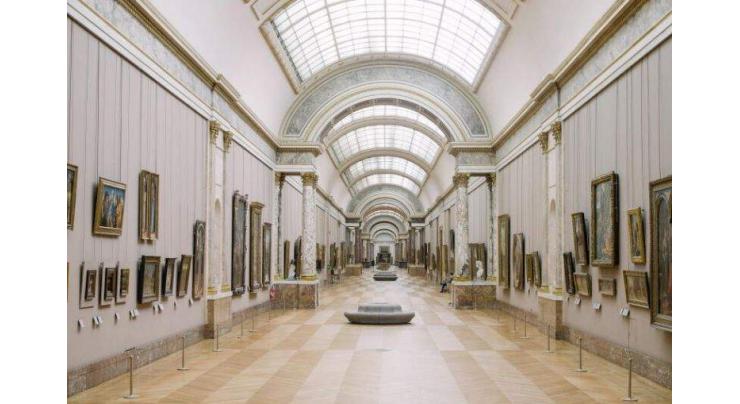
Charm And Negligence Behind Network Of Master Forgeries
Mohammad Ali (@ChaudhryMAli88) Published March 02, 2021 | 07:58 PM

A French journalist's investigation into the alleged forgery network around art collector Giuliano Ruffini has also criticised the "great negligence" of art world experts
Paris, (APP - UrduPoint / Pakistan Point News - 2nd Mar, 2021 ) :A French journalist's investigation into the alleged forgery network around art collector Giuliano Ruffini has also criticised the "great negligence" of art world experts.
The doubts first became public when French police seized a painting owned by the prince of Liechtenstein from an exhibition in Aix-en-Provence in 2016.
The prince had paid seven million Euros at auction for the portrait of the goddess Venus by 16th century German painter Lucas Cranach, yet tests would soon reveal that the pigments used in the painting dated from the 20th century.
Ruffini was well-known in the art world. Since the 1990s, he had sold dozens -- even hundreds -- of paintings by such luminaries as Parmigianino and El Greco to some of the great museums of Europe, including the Louvre, often through intermediaries.
Many, he said, had come from the collection of an ex-girlfriend's father, Andre Borie, a civil engineer who helped build the Mont Blanc tunnel.
Vincent Noce, a journalist for The Art Newspaper, points out in a new book, "L'Affaire Ruffini", that no such collection was ever documented.
Noce has spent five years investigating Ruffini's exploits and is careful to insist that he is innocent until proven guilty.
Indeed, much of his ire is turned not on Ruffini, but on the experts who failed to question the lack of documentation around the paintings they were purchasing.
"The most surprising thing is the manner in which museums, gallerists, dealers didn't try to discover the history of the canvases, allowing themselves to be seduced by the finesse of the copies," writes Noce.
"There has been a great negligence among experts and conservators who didn't question the lack of provenance of artworks and were happy to rely on a visual examination -- sometimes just a photograph -- without any laboratory tests.
" For some aspects of the investigation, Noce was ahead of the police, having been tipped off by two of Ruffini's associates after disputes over their share of the spoils.
- 'Charming' - Noce is also caustic about Italian investigators.
Tax authorities, he writes, were surprisingly unsuspicious when they heard of a special oven in Ruffini's laundry room in Reggio-Emilia, in which a passer-by had spotted a painting left to dry.
A French extradition request for Ruffini to face fraud and counterfeiting charges is on hold while he faces a long-winded tax evasion trial in Italy.
Another extradition request -- for master copyist Lino Frongia, accused of forging an El Greco and other paintings sold by Ruffini -- was turned down entirely by Italian judges last year, claiming a lack of evidence.
Ruffini, now 75, insists he never claimed the portraits were by particular artists, that it was the experts who attached Names and authentications.
He was more than happy to be interviewed by Noce, and was positively "charming" in person, the writer says.
That may explain his decades of success.
"This was a huge affair with dozens and dozens of fake paintings," Eric Turquin, an expert on old masters in Paris, told AFP.
"Ruffini was not able to act without a network of thugs. There were certainly several forgers. They used nicknames, dealt through fake intermediaries, invented provenances.
"It took us a long time, myself included, to understand. Ruffini fooled the great museums and left many victims."
Related Topics
Recent Stories

Rizwan’s batting order may be changed: Sources

Nawaz Sharif to visit Guangzhou exhibition in China

FM Dar not traveling to China: Foreign Office

PM takes notice of deliberate delay in tax cases

Iranian President visits Allama Iqbal’s mausoleum

Iranian President arrives in Lahore today

Currency Rate In Pakistan - Dollar, Euro, Pound, Riyal Rates On 23 April 2024

Today Gold Rate in Pakistan 23 April 2024

Islam enlightened world with its teachings about knowledge: Dr Jamileh

Record London close as oil prices drop on easing Middle East fears

TV tower in Kharkiv struck as Russia captured village

LCCI language courses from May 1
More Stories From World
-
In Brazil, hopes to use AI to save wildlife from roadkill fate
18 minutes ago -
Taiwan hit by dozens of strong aftershocks from deadly quake
28 minutes ago -
Ambassador Hashmi visits Linyi city in Shandong province
48 minutes ago -
Norway women bring seaweed to culinary heights in Europe
58 minutes ago -
Ukrainian agriculture minister suspected in corruption scandal
1 hour ago -
China issues highest-level rainstorm warning after deadly floods
1 hour ago
-
London stock market hits record high
2 hours ago -
Five migrants die attempting Channel crossing: French police source
2 hours ago -
Migrant detentions set to begin after parliament passes UK-Rwanda plan
2 hours ago -
China slams US claims it is fuelling Ukraine war
2 hours ago -
More than 50,000 displaced by clashes in northern Ethiopia: UN
2 hours ago -
N. Korea's Kim oversees 'nuclear counterattack' drill
2 hours ago